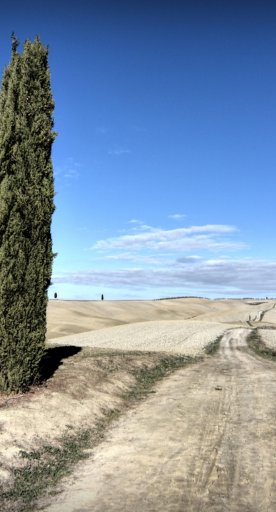Val d'Orcia in Tuscany: what to see and do
Welcome to the valley that seems designed by an artist
The first image that comes to mind thinking or talking about Tuscany is often a landscape: a countryside of green rolling hills, with cypress trees lining the horizon, fortified villages and isolated farmhouses.
Well, this place do exist and it's called Val d'Orcia.
In 2004 Val d'Orcia was added to the UNESCO list of World Heritage Sites with this justification: "The landscape’s distinctive aesthetics, flat chalk plains out of which rise almost conical hills with fortified settlements on top, inspired many artists. Their images have come to exemplify the beauty of well-managed Renaissance agricultural landscapes."
-
1.The towns
-
2.The charming spots
-
3.The flavours
The towns
A Unesco site within another Unesco site, Pienza is a World Heritage Site squared! And can also boast recognition as one of the Orange Flag villages, the quality mark of the Touring Club.
Pienza was once a small village named Corsignano, the birthplace of Enea Silvio Piccolomini, future Pope Pius II, who then wanted to transform his humble birthplace into an urban-architectural treasure, entrusting the total renovation of the village to the architect Bernardo Rossellino and to the humanist Leon Battisti Alberti: in four years they created the "ideal city".
San Quirico d'Orcia is a delightful village located on the route of the Via Francigena, which marked its fate and topography: its center is in fact built around this centuries-old pilgrim route. Not to be missed, just outside the city walls, is the Collegiata dei Santi Quirico e Giulitta, a splendid Romanesque building and one of the rare examples of Lombard style in Tuscany. San Quirico also preserves a noteworthy Italian Renaissance garden, the Horti Leonini.
Piazza Vecchietta is at the centre of Castiglione d'Orcia, another enchanting village of the area. The Palazzo del Comune and other medieval buildings overlook the intriguing heart of the village.
The Sala d'Arte San Giovanni is a small museum that houses paintings by some of the greatest exponents of the Sienese school in the 14th and 15th centuries: Simone Martini, Lorenzo di Pietro (who was the one known as il Vecchietta) and Giovanni di Paolo. On a limestone spur stands the impressive Tentennano Fortress.

Montalcino is a medieval village with breathtaking panoramas all around, a gem of history and art, one of the Orange Flag villages and, if this was not already enough, it is the hometown of Brunello, one of the most famous wines in the world. The historic centre is dominated by the imposing citadel and in the main square, Piazza del Popolo, stands out Palazzo dei Priori (the town hall) adorned with numerous coats-of-arms. The Civic Diocescan Museum of Sacred Art is home to one of the richest collections of painting and wooden sculpture from the Sienese school.
Another Orange Flag little town, Radicofani is one of the most spectacular fortresses in Tuscany.
Its most interesting monument is the Romanesque Church of San Pietro, with a splendid collection of Della Robbia terracottas inside. In the Maccione Gardens a statue is dedicated to Ghino di Tacco, a figure remembered as the Robin Hood of Val d’Orcia who lived in this impregnable Fortress, today a museum of archeological findings; from the top the view stretches across the whole Val d’Orcia.

The charming spots
Being in front of the Chapel of the Madonna di Vitaleta means coming face to face with one of the most famous postcard images of Tuscany! Just a couple of kilometres outside San Quirico, on a dirt road in a sea of hills, stands this tiny Chapel framed by cypress trees; it was probably built in late Renaissance and it used to contain a Virgin Mary statue by Andrea della Robbia (today in San Quirico).
Near Montalcino stands the Abbey of Sant’Antimo, one of the most beautiful Romanesque jewels in Tuscany, constructed with travertine stone with alabaster. The origins of this church are shrouded in legend: it is said to have been founded by Carlo Magno, who, returning from Rome with his followers along the Via Francigena, stopped to rest and escape the plague in the Starcia valley and then, to give thanks, founded the Abbey.
The fame of Bagno Vignoni, a tiny charming village just a few kilometers from San Quirico d'Orcia, is due to a characteristic that is as unique as it is fascinating: its main square is a pool 49 meters long and 29 wide of hot thermal water. Although it is no longer possible to plunge into this special swimming pool, the spectacle of the steam that at sunset rises and envelops the stone buildings around the square is unforgettable.

The flavours
In addition to the aforementioned Brunello di Montalcino, the first Italian wine to obtain the DOCG label (1980), Val d'Orcia give the world others appreciated products and flavours.
Pecorino di Pienza is one of the specialties of the area, to be combined with Cinta cured meats to bring a typical Tuscan platter to the table, accompanied by honey and jams, and with a glass of Orcia DOC red wine.
This is also a land that smells of truffle and saffron.

Plan your trip
What’s nearby?


































































